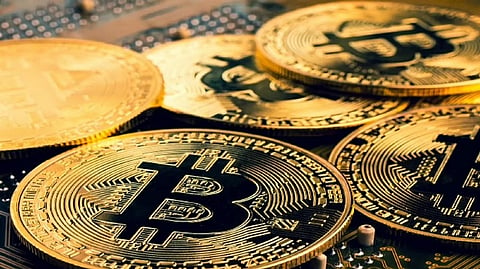

NEW DELHI: That money is ubiquitous is a reality. International corporations transact in it; citizens pay tax with it; without it, people would struggle to have life’s basic necessities: food, clothes, a roof over their heads.
Such a permanent asset used to be - until recently - controlled by governments. Central banks were the only institutions authorised to issue currency to their citizens.
A whole science, that we now call monetary policy, has developed around this process. However, cryptocurrency, with all its quirks and surprises has changed this. Now, individuals can create their own micro-economies.
This is where tokenomics has emerged as a viable alternative for applying monetary policy to blockchain networks. It essentially takes what central banks use as monetary policy and apply it in blockchain networks.
The term definitely sounds new and has recently made strides in changing the conventional norms of economics based on cryptocurrency.
Tokenomics, the science of the token economy, covers all aspects involving a coin’s creation, management, and sometimes removal from a network.
A deep dive into tokens will give an understanding of tokenomics. Tokens are essentially units that serve particular objectives alongside holding value on the basis of different characteristics.
Tokens are recognised as valuable assets capable of serving more than the role of currency.
For example, cricket tickets could work as tokens because you can choose to watch a match with the tickets or trade the tickets for something else in return.
The tokenomics model depends a lot on the tokens represented in form of cryptocurrencies.
They could serve different functions in a network other than serving the role for trading assets only. The arrival of Ethereum gave a substantial boost to the concept of tokens with cryptocurrencies.
Let’s now see how it works. In 1972, Harvard psychologist BF Skinner was the first person to put forward the idea of the token economy where the token economic model could help in controlling behaviour.
The model basically concentrated on offering certain units of recognisable value for incentivising actions and vice versa.
Over time, token economics has evolved into a massive discipline focused on studying economic institutions and the policies associated with the creation and distribution of tokenised goods and services.
The discussion on token economics till now has emphasised the significance of value in the crypto landscape, types of tokens, and the incentive behaviour encouraged by token economics.
Now, the next step in understanding the token economy would involve an overview of the working of tokens. In fact, one can know how token economics work when one understands how tokens work.
Some of the notable facets that one should look out for in the working of tokens include token distribution, business scope, price stability, governance and future readiness.
The principles, philosophies and models by which tokens, coins and the projects that underpin are at the beginning of experimenting with what works, and what doesn’t.
There are plenty of models that won’t work, and obviously those projects will fade away. But the ones that do, will go on to inspire to become basis for upcoming projects.
Visit news.dtnext.in to explore our interactive epaper!
Download the DT Next app for more exciting features!
Click here for iOS
Click here for Android